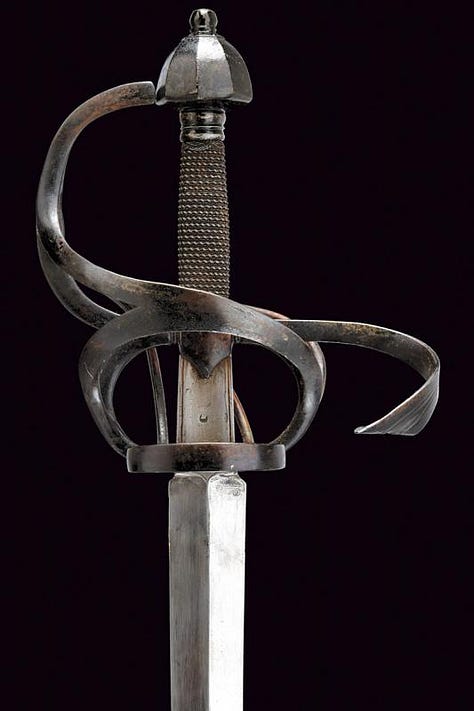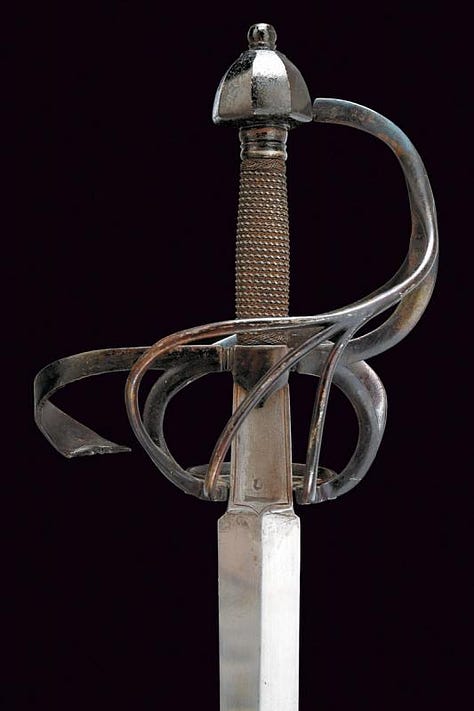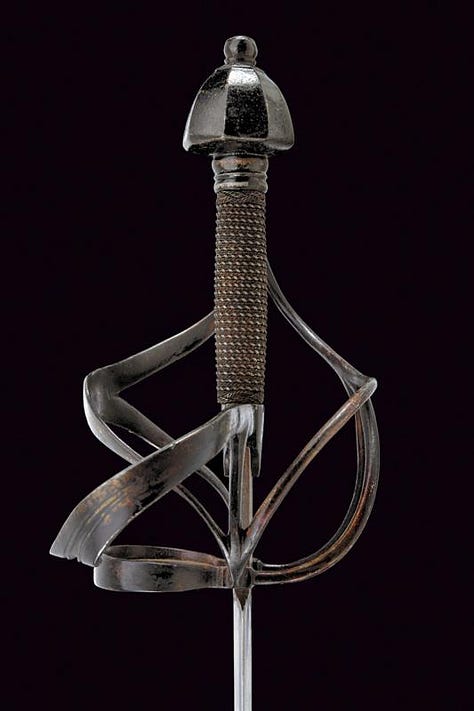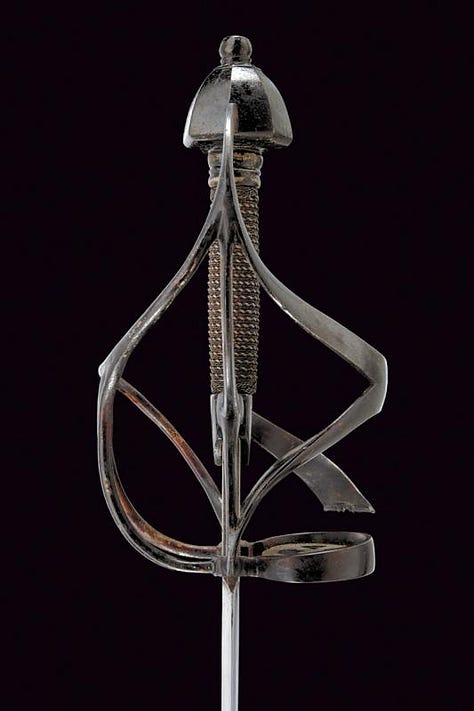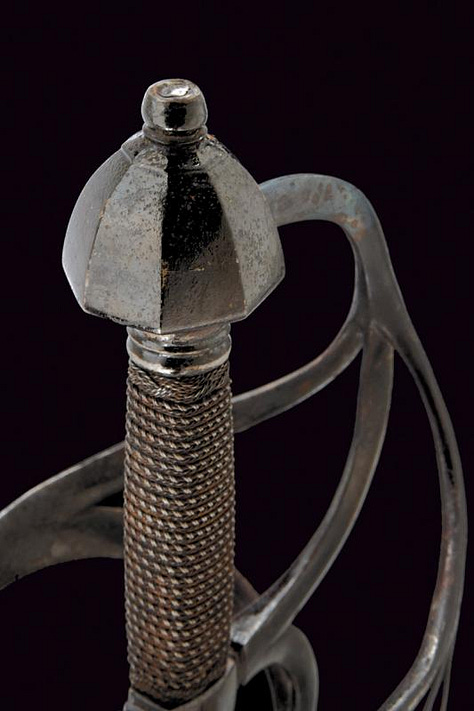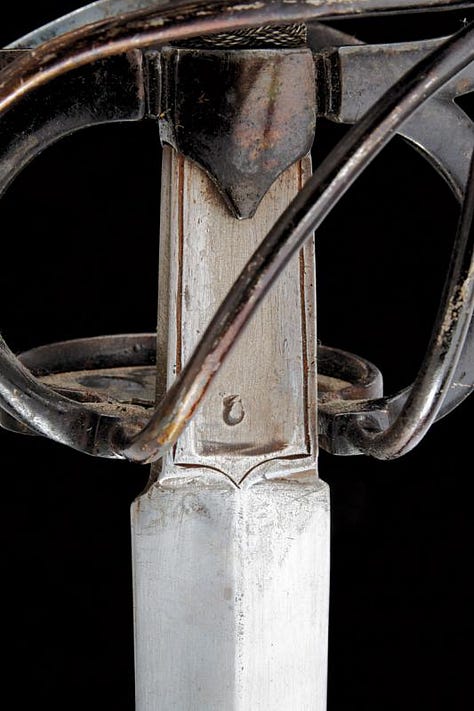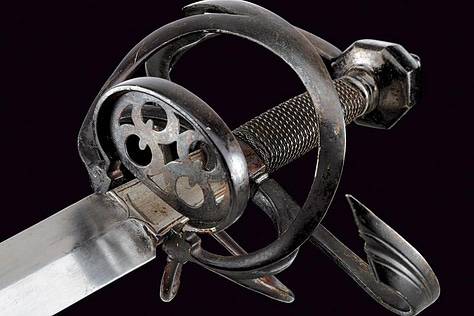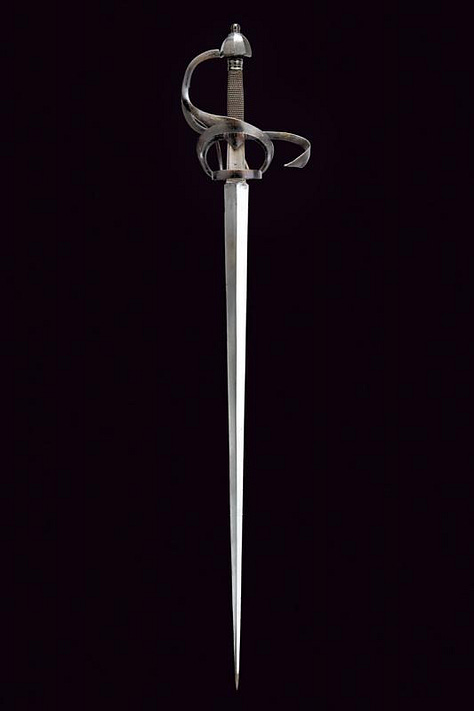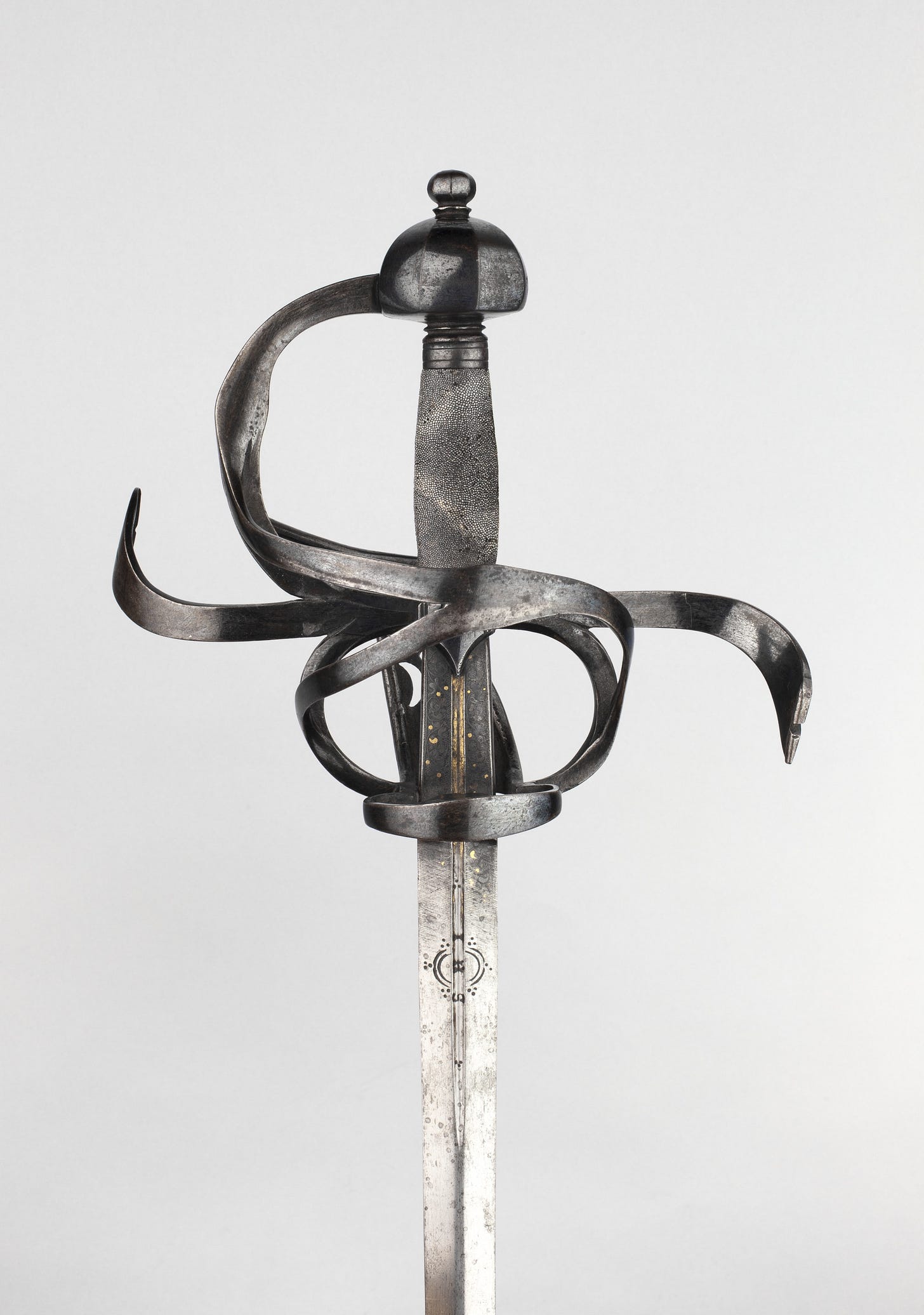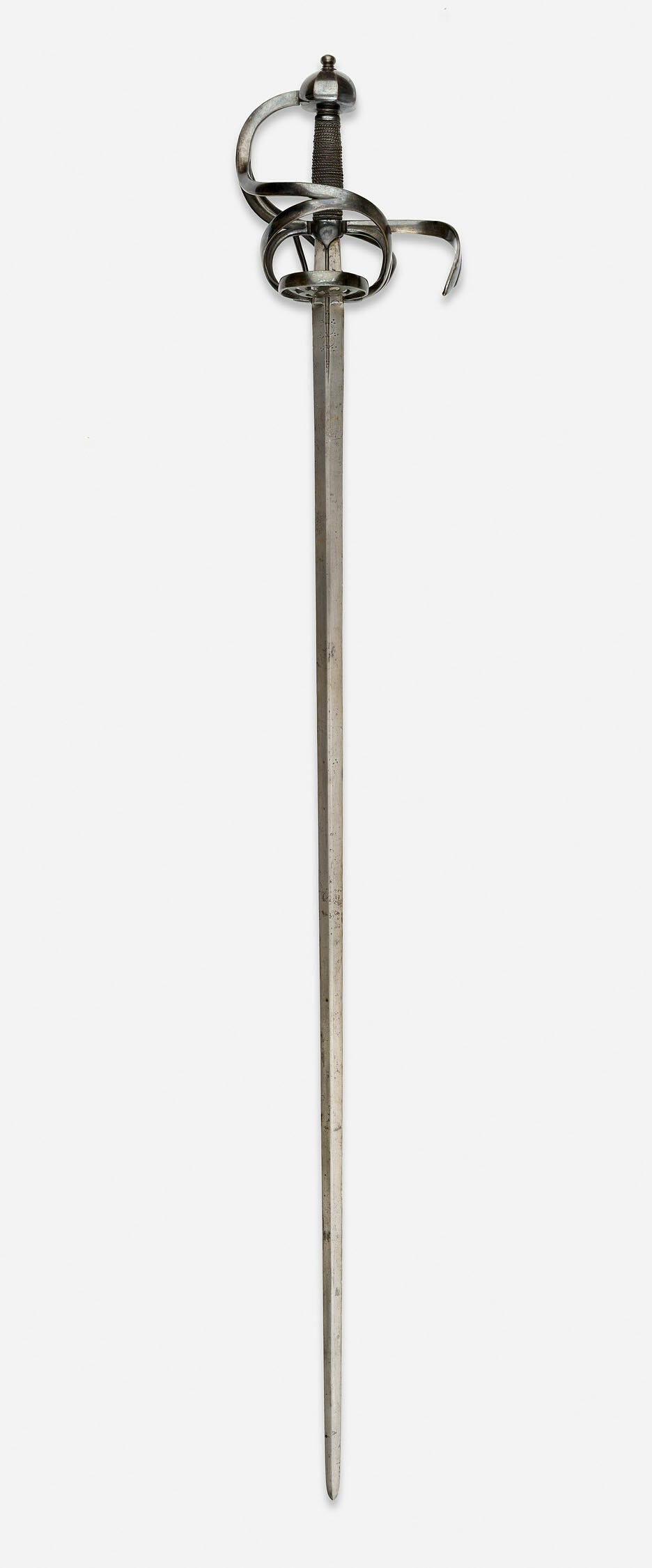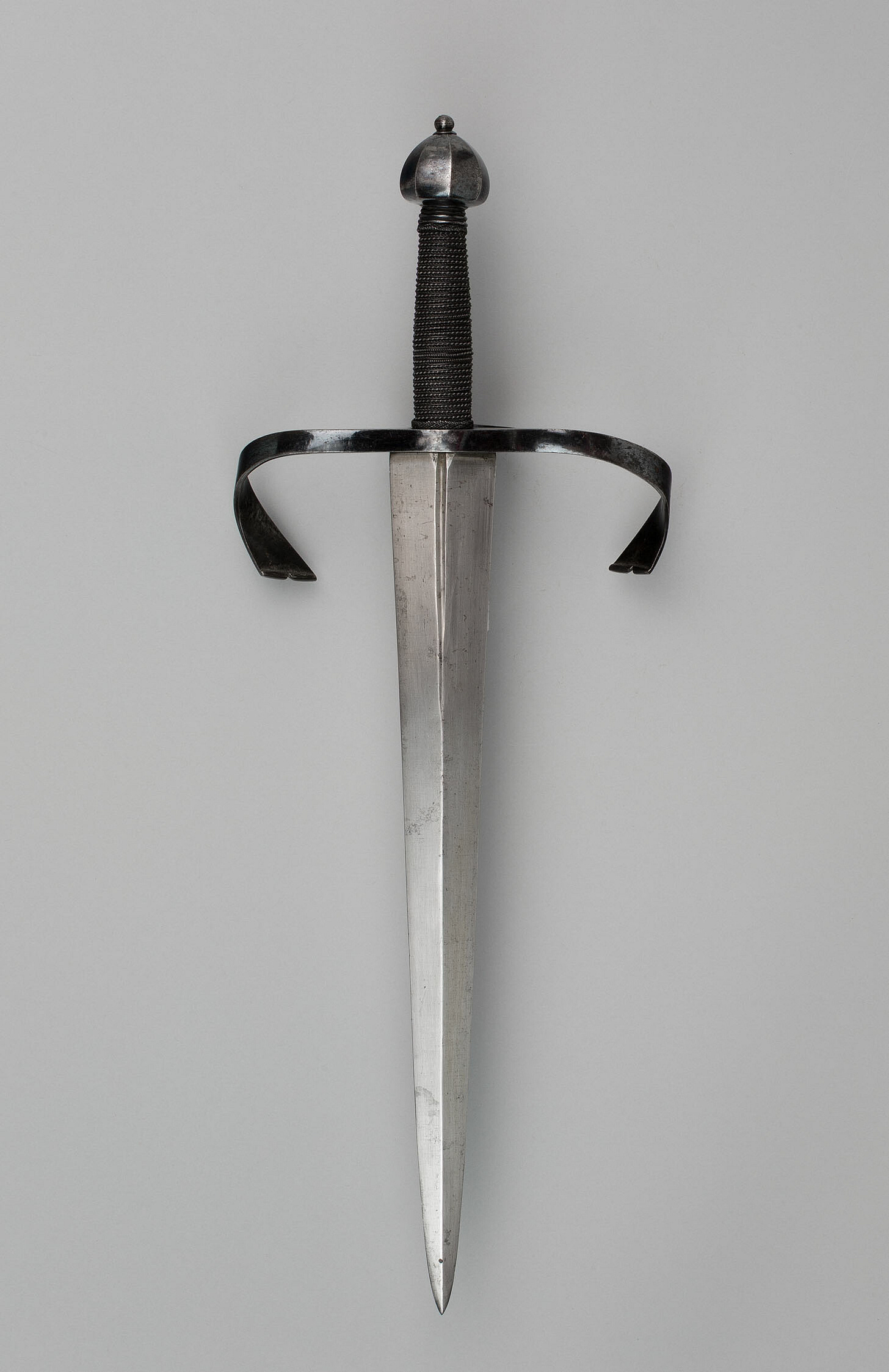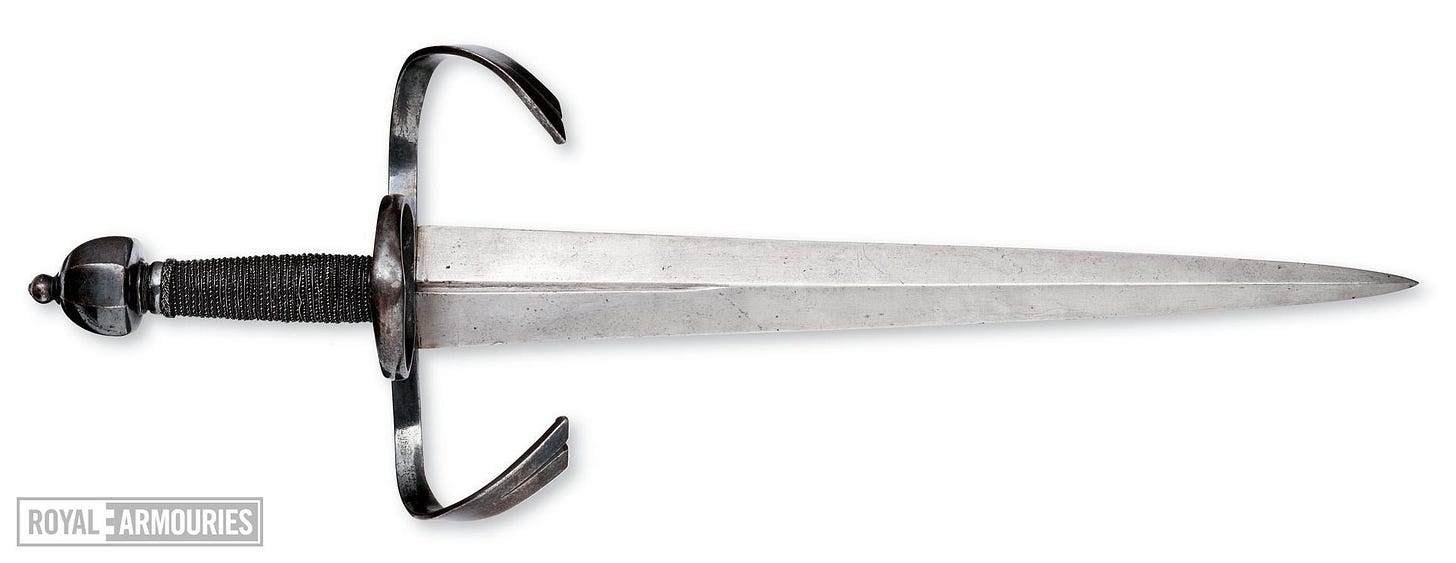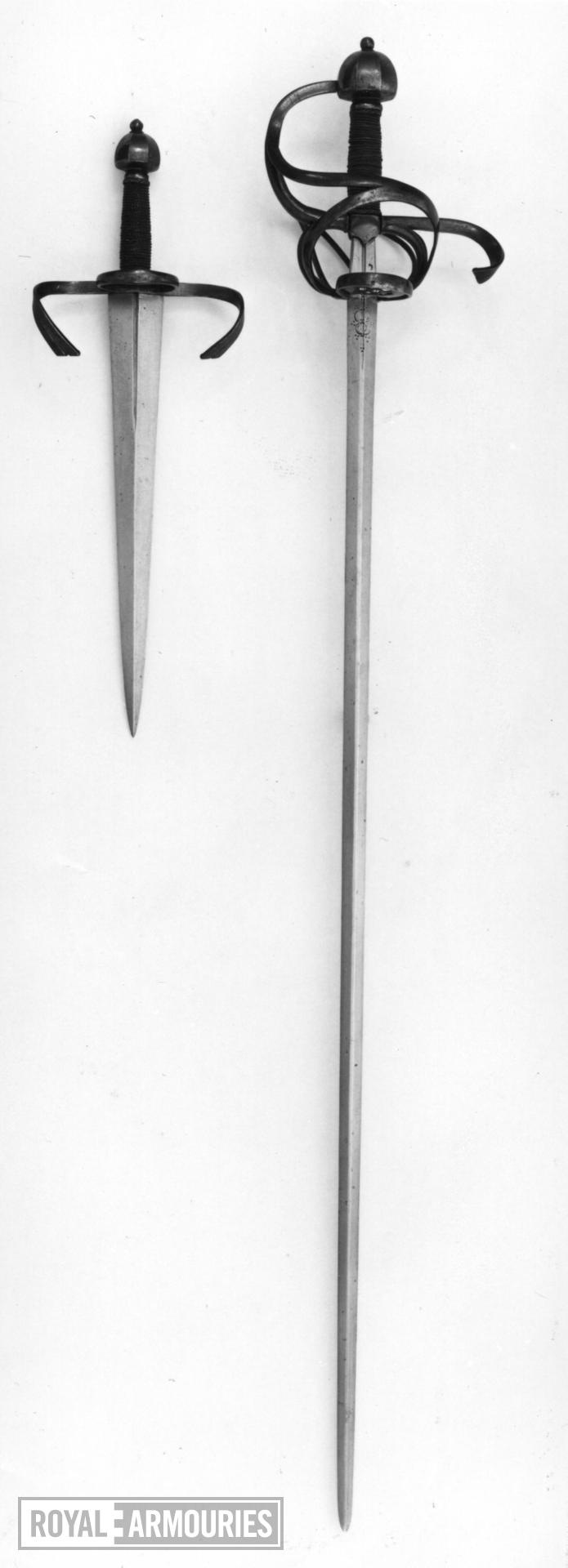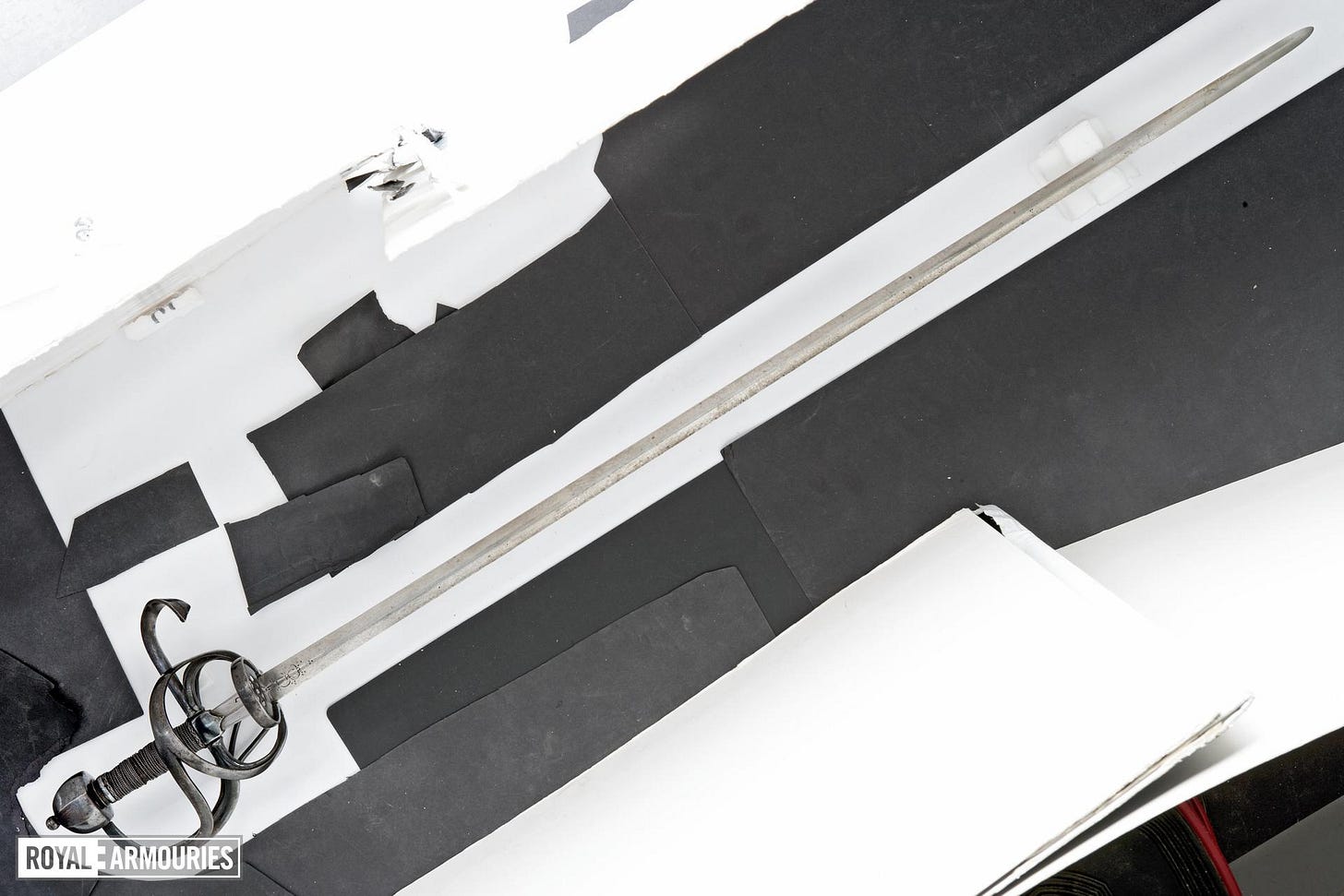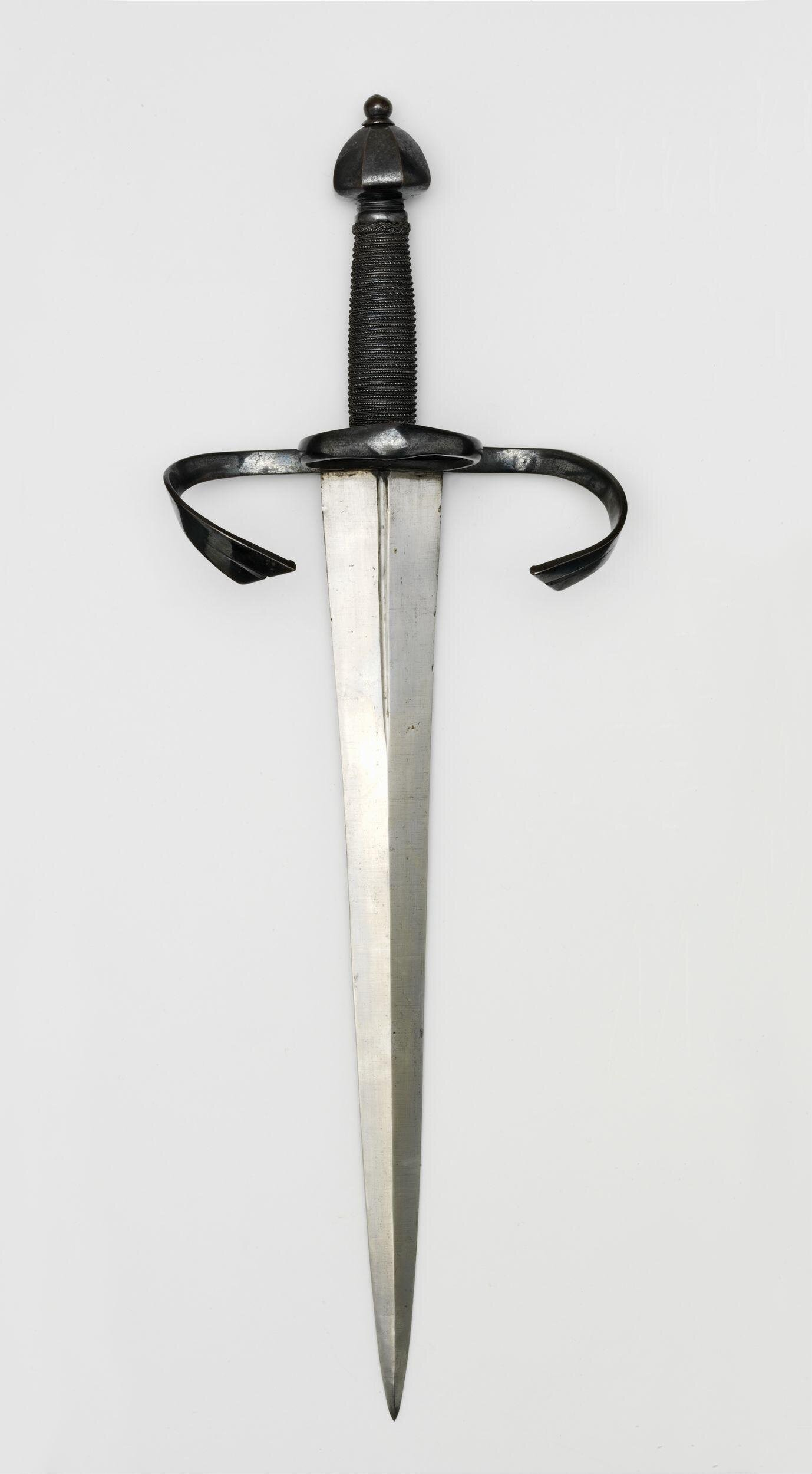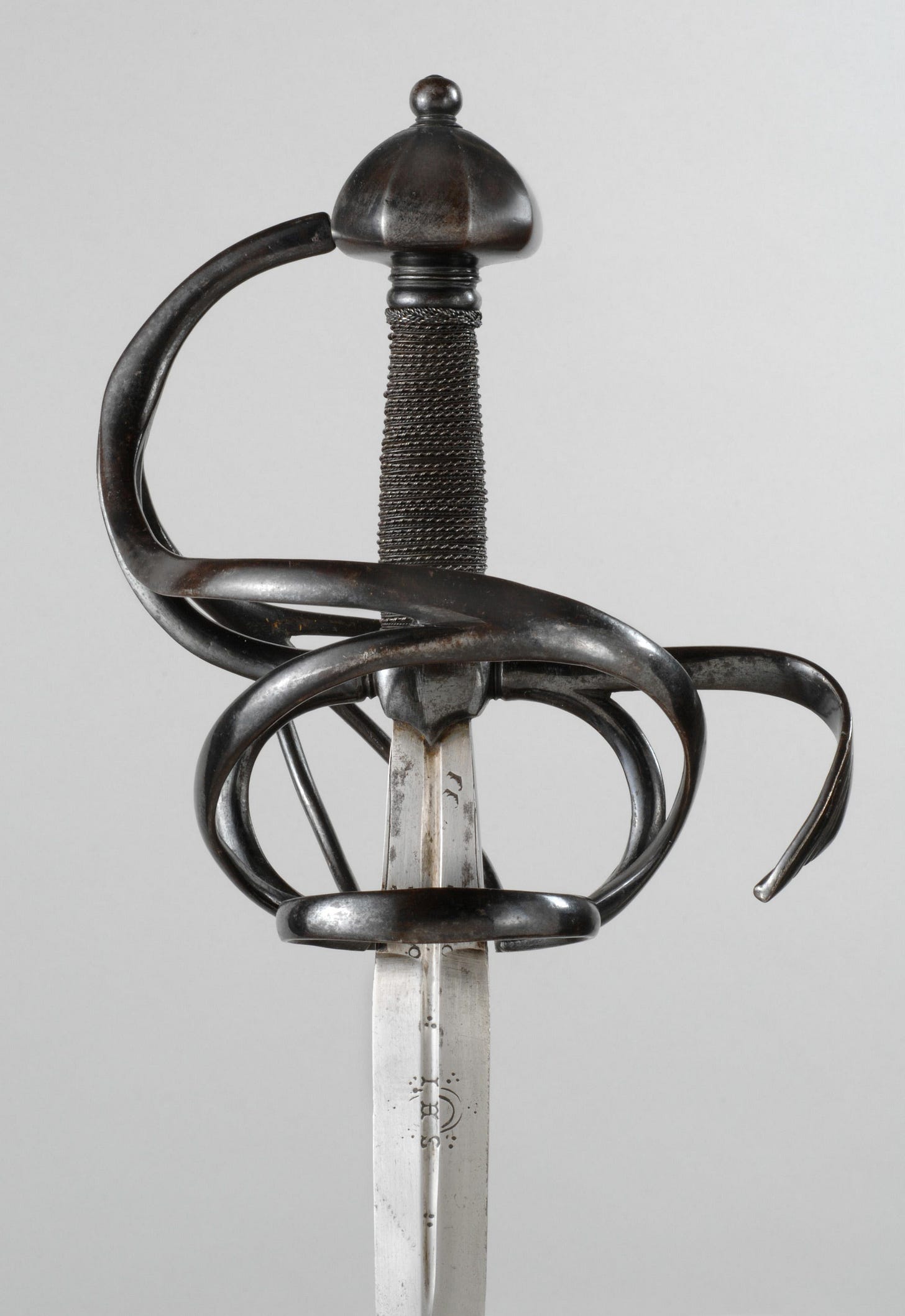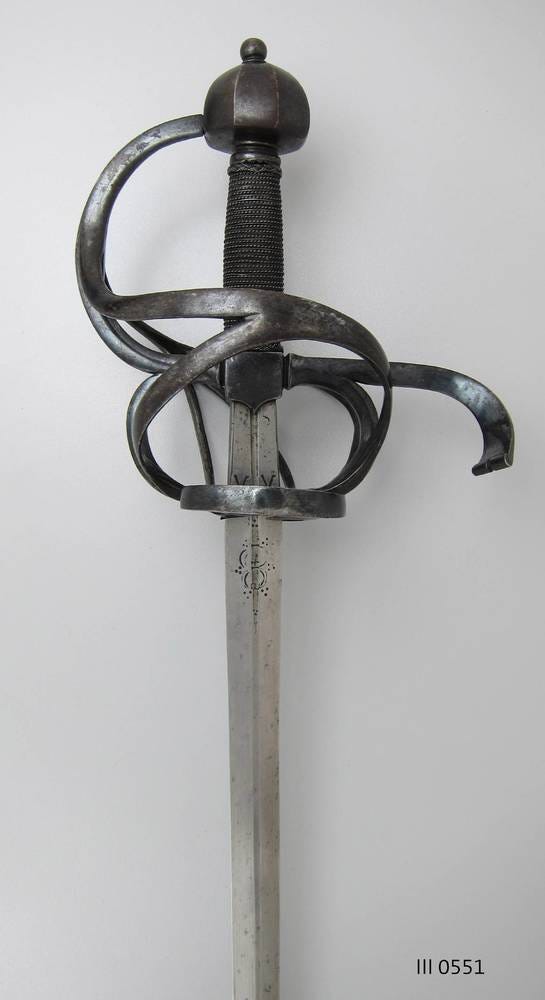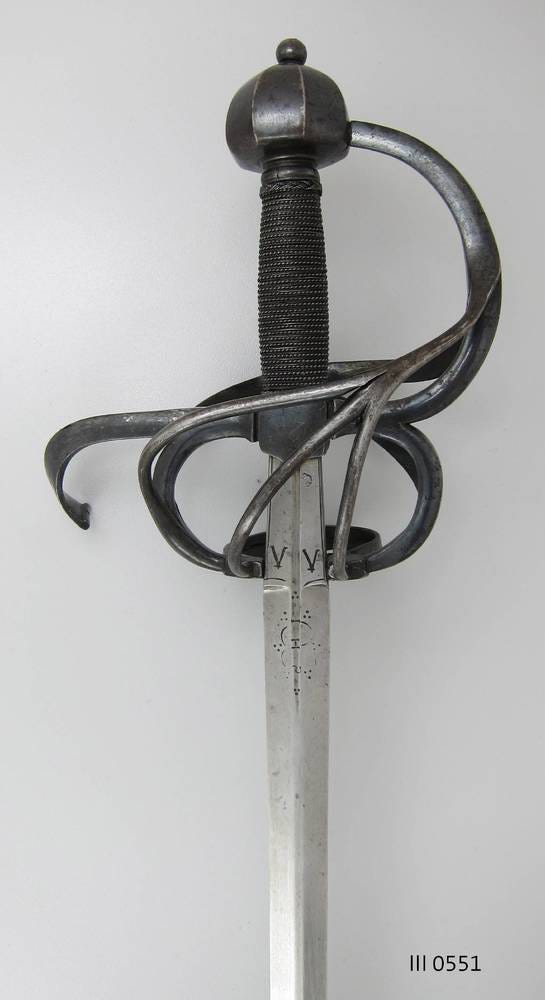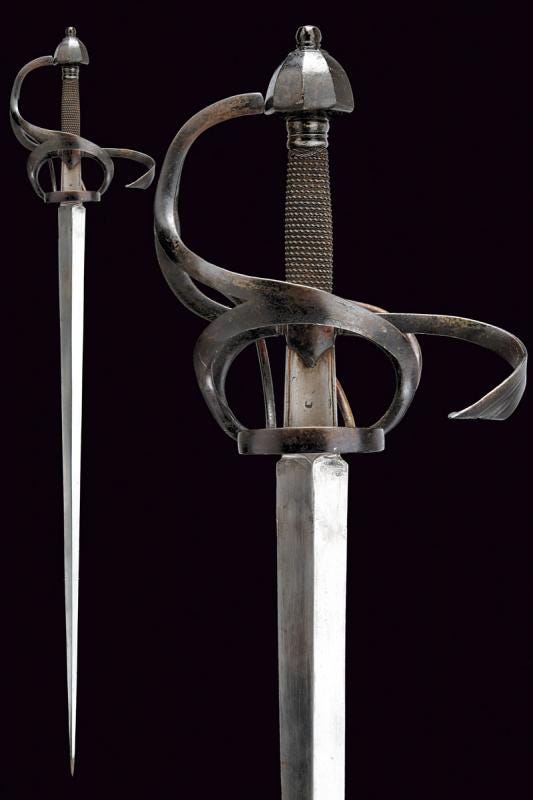There are a few rapier types that are associated with the Duke-Electors of Saxony and Saxony as a region, either as the place of provenance or in reference to the style of the hilt fittings. The ones we are concerned with in this post are rapiers of the Guard of the Dukes. As in the case of the Munich Town Guard Swords, they form a class of weapons c.1600 that are quite standardise in style, even if manufacturing variations are to be expected.
I am interested in highlighting as many examples of this type of rapier and the associated dagger, and list a few measurements when available. The Peace of Westphalia from 1648, that ended the Thirty Years' War, is seen as the line in the sand that marks the start of the Early Modern age. A fitting hallmark to denote the transition from an uncivilised age when a disagreement was decided by killing thousands on the field of battle, to the civilised age of holding peace talks to settle matters, after directing others to kill millions, mostly civilians, naturally. Yet the ideas of fielding uniform armies and standardising pieces of equipments, such as military field rapiers, starts to creep in long before that. When it comes to what I will denote simply as Rapiers of the Guard, the similarities between pieces is what I find particularly interesting.
The Art Institute of Chicago
Total length 121cm, blade length 107.7cm, weight 1275g. Made in Dresden c.1580-1610.
While this represents an outlier, as it possess the bottom quillon and is decorated more elaborately, it nonetheless represents the same Guard Rapier style. It is also worth to make the distinction that, these particular rapiers may have been connected with the specific guards in charge of protecting the Duke-Electors of Saxony, rather than the extended definition of guards as the militias in services of the dukes.
The Art Institute of Chicago
Total length 120.7cm, blade length 108cm. Made in Dresden c.1580-1610.
These represent the archetypical look for the rapier and dagger that we will denote by the term Rapiers of the Guard. We see a long diamond shaped blade of 2.4cm in width, estimated at the shoulder of the ricasso. The blade has a short narrow fuller about twice the length of the 5cm ricasso, and a tip that is just the diamond continuation of the blade, making it quite thrust centric, while still retaining some cutting potential. The hilt is only 12.7cm in length, giving a 7.5cm short grip estimation, or 8cm if we include the part of the bulbous pommel that extends towards the grip. The side-port ring is closed by a perforated disk plate. The narrow blade informs us that these rapiers are optimised for the thrust, the closed port facilitates the use of the 3rd guard (i.e. keep the rapier in front of you, not angled in from the side), and the short grip forces a person to place their finger over the crossguard. This translates into a very natural way to use a rapier. The conjecture on my part that these rapiers are made to be foolproof, is in part informed by the idea that members of the guard are peasant folk, not fencing masters. Just like today, you want a weapon that can be used by the worst person in the squad, not just by the best.
The Royal Armouries
No stats of the rapier are given, except to reinforce that they are from about the year 1610. However, some stats of the dagger are given as: total length 51cm, blade length 36.5cm, weight 822 g.
Victoria and Albert Museum
While unclear if this dagger was moved from the V&A to the Royal Armouries, we can read on the museum page: “This dagger comes from the armoury of the Electors of Saxony and equipped a member of their bodyguard. It would have once been twinned with a rapier, a long sword with a slender blade and elaborate hilt. The rapier and dagger combination was primarily designed for self-defence using fighting techniques developed in Italy that are the ancestors of modern fencing. The sixteenth-century rapier was both a slashing and stabbing weapon. Its accompanying dagger was used in the left hand for parrying and stabbing in close. The stiff slender blades of both were designed to pierce clothing rather than armour. The raper and dagger were also male fashion accessories worn at court, in procession and about town. They projected an image of honour based on social standing and, if necessary, defended it in one-on-one combat.”
While not wrong on the use of the rapier and dagger, the assessment that these are weapons only for bodyguards is contradicted by other sources, such as the one from Staatliche Kunstsammlungen Dresden, Saxony (see below).
Philadelphia Museum of Art
Rapier c.1585-1600. Blade made by bladesmith Peter Munsten the Elder (German, Solingen, active 1591–1627).
Staatliche Kunstsammlungen Dresden
German, probably Solingen, end of the 16th or beginning of the 17th century. Total length 118.3 cm, blade length 102.4 cm, weight 1480g. We are told: “The rapier belongs to a series of almost identical weapons with angular knob, blued fittings and the Christ monogram IHS on the blade. They probably served under Elector August and Elector Christian I of Saxony to become the court arms of ordinary farmers.” Relevant information about Duke Electors: Christian, Saxony, Elector (1560-1591) and August, Saxony, Elector (1526-1586) are the people most likely associated with the introductions of this rapier model.
Czerny's Auction House
An example from c.1600, of 113cm in total length, sold by Czerny's auction house for €10,500. While a pittance for most, I’m sure, fret not, as this type of rapier can be seen quite often being sold in antique stores and being listed at auction houses. On this particular piece, the blade looks shorter and more point focused, being described by the Italian auction house as an estoc type blade.
